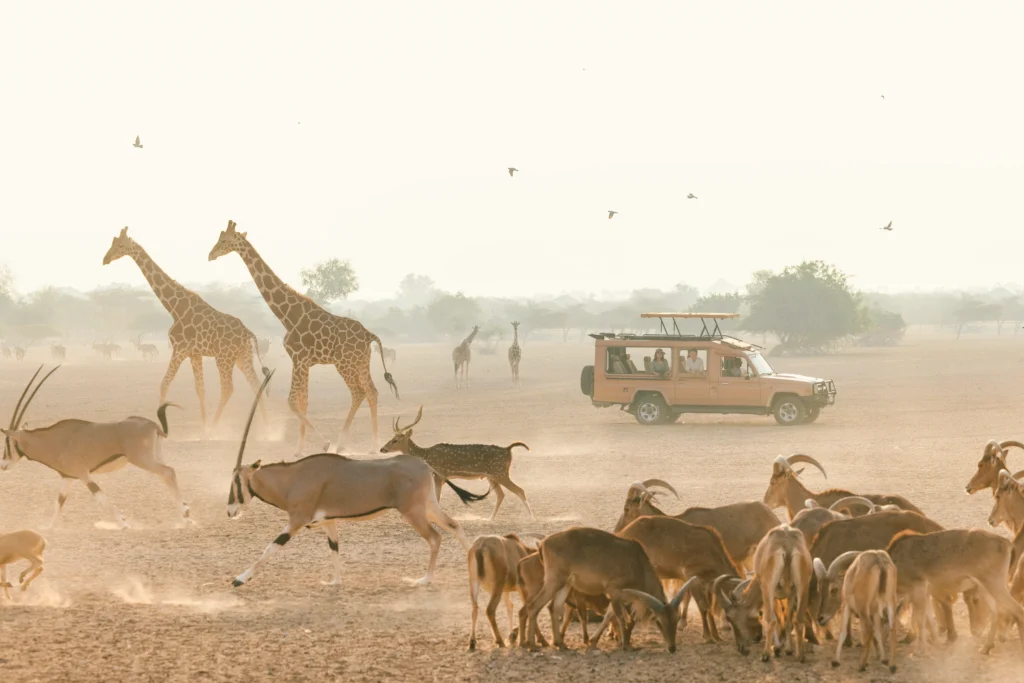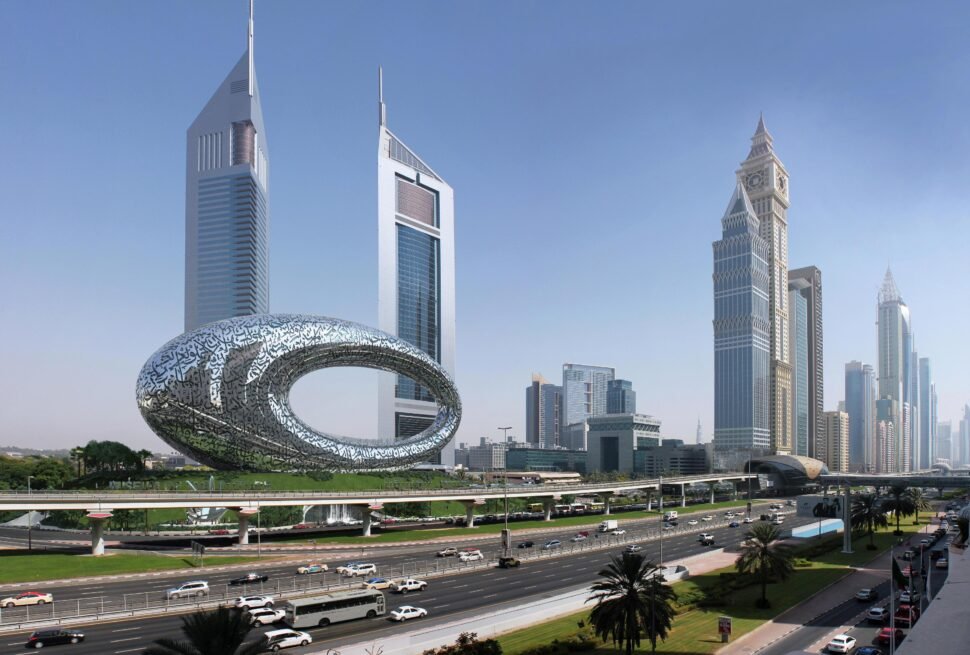Abu Dhabi is the capital of the United Arab Emirates and is famous for its tall buildings and high-class lifestyle. But outside of the city lies a world of wildlife and natural beauty that is truly amazing. Abu Dhabi’s amazing nature and wildlife, from vast deserts to lush mangroves and thriving marine ecosystems, make outdoor activities an unforgettable experience for travellers.
The emirate cares a lot about the environment and has set up protected reserves and eco-friendly tourist programs so that people can enjoy its many landscapes without hurting the environment.
Exploring The Natural Wonders Of Abu Dhabi
1. Sir Bani Yas Island – A Wildlife Haven

Located about 170 kilometers southwest of Abu Dhabi, Sir Bani Yas Island is one of the UAE’s most impressive wildlife reserves. Established as a protected area, the island is home to thousands of free-roaming animals, including Arabian oryx, gazelles, giraffes, and cheetahs. Visitors can go on a wildlife safari to witness these majestic creatures in their natural habitat. The island also offers eco-friendly activities such as kayaking, hiking, and mountain biking, making it a perfect retreat for nature lovers.
2. Mangrove National Park – Green Paradise Of Abu Dhabi

Nestled within the heart of Abu Dhabi, Mangrove National Park is a stunning natural escape covering approximately 19 square kilometers. The park plays a crucial role in protecting the coastal ecosystem and is home to flamingos, herons, and various fish species. Exploring the mangroves by kayak or paddleboard is one of the best ways to experience this serene environment while learning about the region’s biodiversity.
3. Al Wathba Wetland Reserve – A Birdwatcher’s Paradise

A short drive from Abu Dhabi city, Al Wathba Wetland Reserve is a hidden gem known for its rich birdlife, including thousands of flamingos that migrate here during autumn and spring. The reserve is also home to over 250 species of birds, making it a dream destination for birdwatchers and photographers. Nature trails and designated viewing areas allow visitors to explore the wetlands without disturbing the wildlife.
4. Jebel Hafeet – Majestic Mountain Of Abu Dhabi

Rising 1,240 meters above sea level, Jebel Hafeet is the highest peak in Abu Dhabi and one of the region’s most scenic spots. The mountain offers breathtaking views of the desert landscape and is home to ancient tombs dating back over 5,000 years. Visitors can drive up the winding road to the summit or explore the nearby Green Mubazzarah, a natural hot spring area ideal for relaxation and picnics.
5. Bu Tinah Island – A Protected Marine Sanctuary

Part of the Marawah Marine Biosphere Reserve, Bu Tinah Island is an unspoiled marine paradise located off the coast of Abu Dhabi. It is home to vibrant coral reefs, seagrass beds, and endangered species such as hawksbill turtles and dugongs. The island is strictly protected and closed to visitors, but its existence highlights Abu Dhabi’s commitment to marine conservation.
Inclusions
When exploring Abu Dhabi’s natural attractions, visitors can enjoy:
- Guided Tours – Expert-led excursions providing insights into local wildlife and conservation efforts.
- Wildlife Safaris – Close encounters with native species in protected environments.
- Eco-Friendly Activities – Sustainable tourism experiences like kayaking, hiking, and snorkeling.
Exclusions
While many nature reserves are accessible to the public, certain areas have restrictions:
- Protected Reserves – Some locations, like Bu Tinah Island, are off-limits to visitors to preserve delicate ecosystems.
- Activity Limitations – Certain activities may not be permitted in some areas to protect wildlife.
Cancellation Policy
At Forever Tourism, we understand that plans can change unexpectedly. We do not have a cancellation policy for all types of bookings. Refunds will only be initiated if we cannot provide the booked service due to any fault on our end. This policy ensures peace of mind should your plans change at the last minute.
Explore Natural Wonders Of Abu Dhabi With Forever Tourism

Abu Dhabi’s beautiful nature and wildlife are a great contrast to the city’s skyscrapers. They give tourists a chance to connect with nature and see stunning scenery. Every nature lover can find an adventure on Sir Bani Yas Island, whether they want to explore the island’s rough landscapes, paddle through the peaceful marshes, or watch birds in the wetlands.
You can enjoy these nature wonders in a responsible and fun way with Forever Tourism. Our expert-led tours and eco-friendly travel choices make sure that your trip through Abu Dhabi’s natural wonders is both memorable and good for the environment.
FAQs
1. When is the best time to visit nature reserves of Abu Dhabi?
The ideal time is between November and April when the weather is cooler, making outdoor activities more comfortable.
2. Are guided tours available for these natural sites?
Yes, many reserves offer guided tours with experts who provide valuable insights about the ecosystem and wildlife.
3. What should I wear when visiting these areas?
Lightweight, breathable clothing is recommended, along with comfortable walking shoes. Don’t forget sunscreen, a hat, and plenty of water.
4. Can I visit Bu Tinah Island?
No, Bu Tinah Island is a protected area and is closed to the public to safeguard its fragile marine ecosystem.
5. How can I book a tour to Abu Dhabi’s natural attractions?
Forever Tourism offers exclusive packages to explore Abu Dhabi’s incredible nature and wildlife. Contact us today to plan your eco-adventure.
Ready to experience Abu Dhabi’s incredible nature and wildlife? Book your adventure with Forever Tourism and explore the emirate’s stunning landscapes, diverse wildlife, and eco-friendly attractions. Let us make your trip unforgettable!
For assistance:
How to Contact?
Call us at +971 43889941
WhatsApp us at +971565481112
Email us at info@forevertourism.com



















